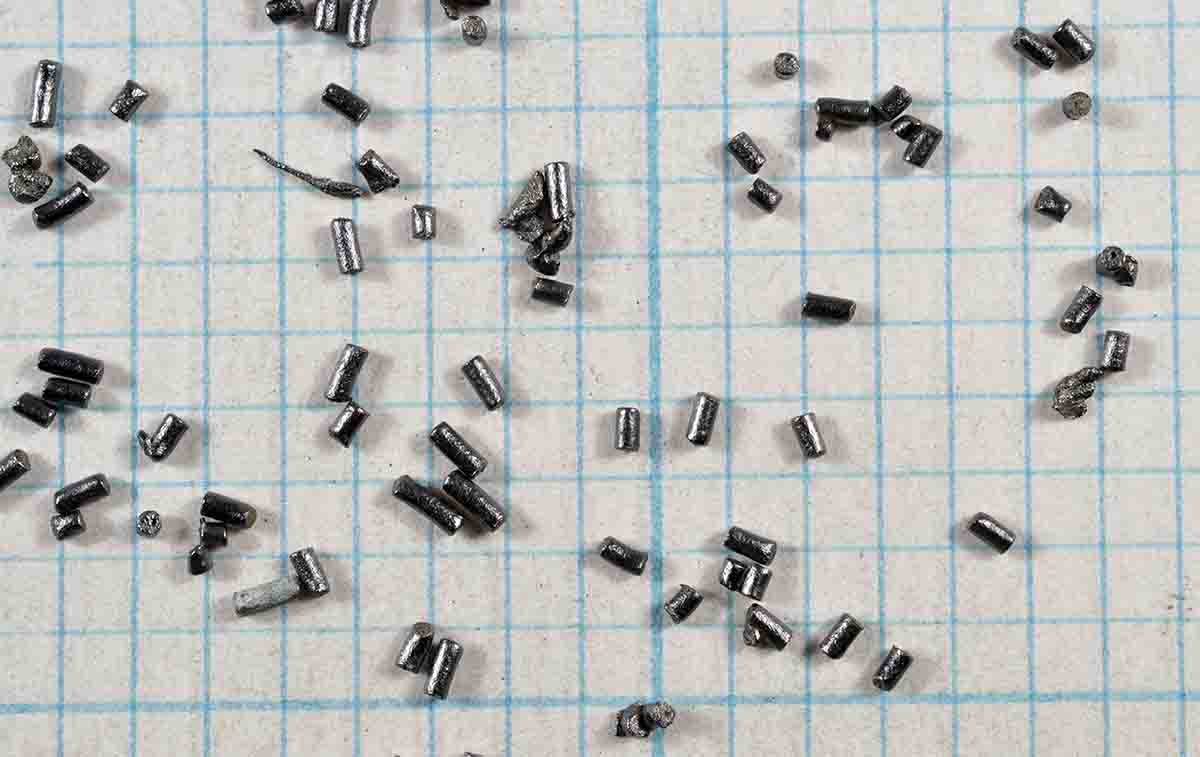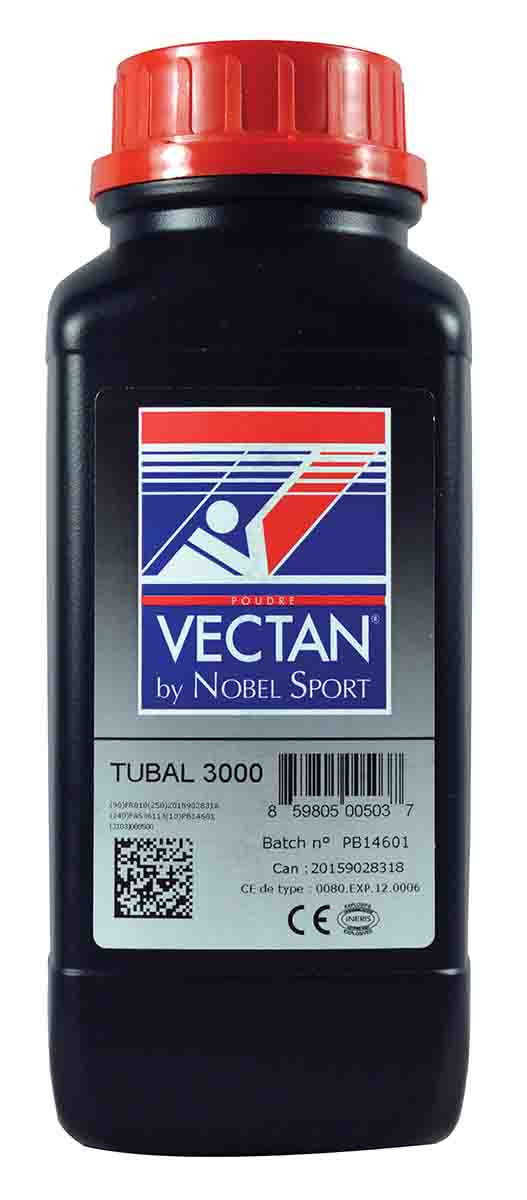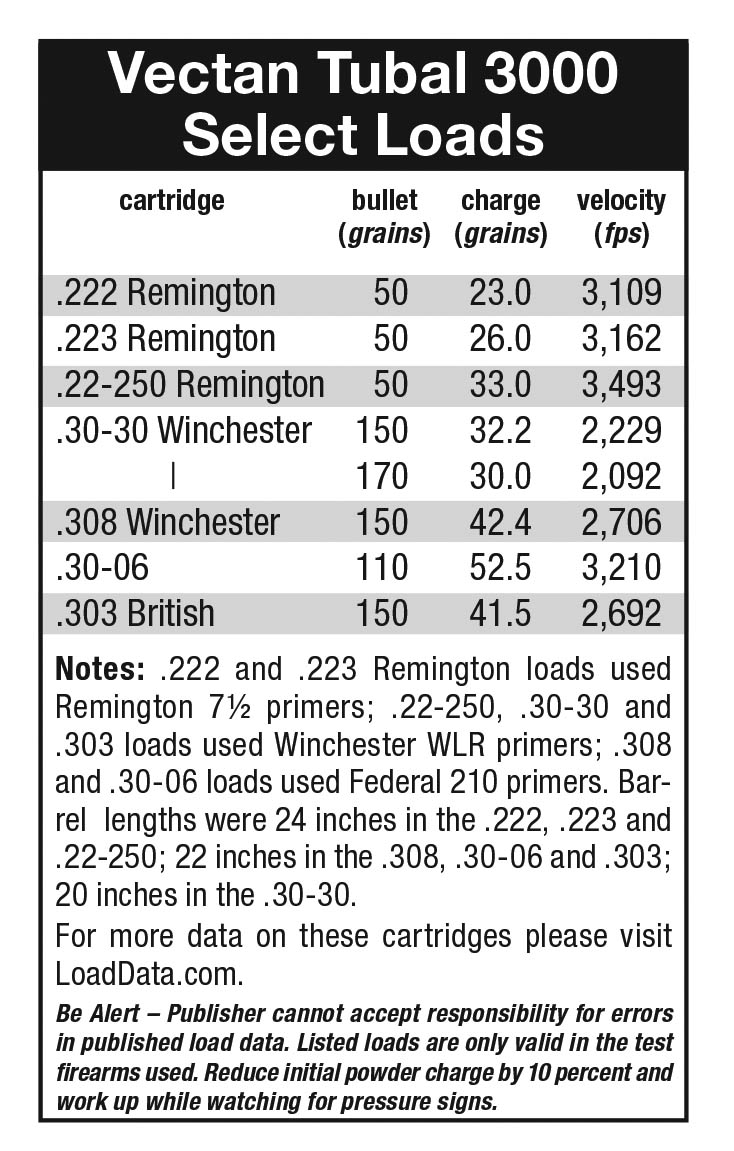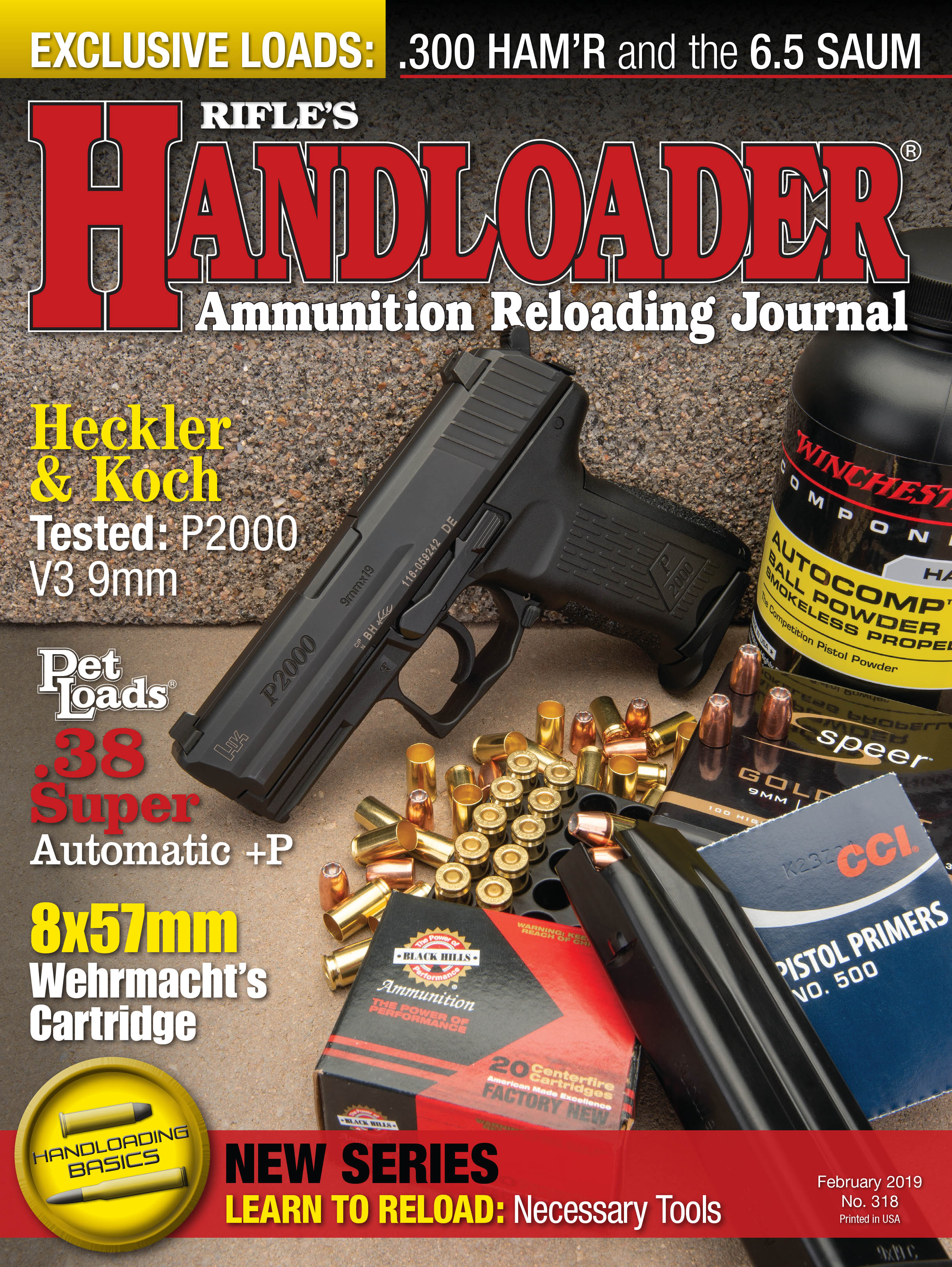Propellant Profiles
Vectan Tubal 3000
column By: R.H. Vandenburg, Jr. | February, 19
As noted previously in this column, Vectan powders are manufactured in France. They are part of SNPE, a French conglomerate that includes Vectan powders, Nobel Sport ammunition and Martignoni primers, which are marketed under its own name and that of Nobel Sport. All of the powder containers are labeled “Vectan by Nobel Sport,” followed by the powder name.
There are 19 Vectan powders currently being imported, of which I have 18. All are single base powders. Ten are shotshell powders with some crossover to handgun use. Five are purely handgun powders, although the

Rifle powders are limited to the Tubal family of powders. Tubal powders were developed shortly after the end of World War II. They replaced earlier powders such as BN.3F and BF.P1. These early Tubal powders were each aligned with a comparable DuPont powder in terms of burning rate. Eight different powders were available, identified as Tubal 1 through Tubal 8, from fastest to slowest. Individual grains were comparatively large, each having seven perforations to assist in controlling burning rate. In 1991 the Tubal family of powders was revised, with the new powders having a smaller granule size with a single perforation. Initial combustion is controlled by the addition of dinitrotoluene. The number of powders dropped from eight to five: Tubal 2000, Tubal 3000, Tubal 5000, Tubal 7000 and Tubal 8000.
Generally, comparable powders, such as Tubal 3 and Tubal 3000, do not occupy the same position on a burning rate chart. At some point, after 2002 at the earliest, Tubal 2000 was dropped from the lineup, leaving Tubal 3000 as the fastest-burning of the family and the subject of this review.
Tubal 3000 is, as noted, a single base powder of extruded construction with a single perforation. Individual granules have a diameter of approximately .008 inch and a length of about .066 inch – as well as I can measure. Bulk density is given as .900 g/cc. Relative burning rate is difficult to ascertain because there does not appear to be any chart that includes Vectan and traditional American powders. Suffice to say, Tubal 3000 appears to be slower than IMR-3031, similar to IMR-8208 XBR, Alliant Reloder 12 and Accurate 2460. No specific comparisons should be attempted, however.

My first choice for testing this new powder was the .222 Remington. Previously, Tubal 2000 was the powder that best served, but Tubal 3000 is certainly acceptable. Its slower and calls for heavier powder charges; a drop tube or other means of settling the powder at maximum charges was needed to prevent crushing the top grains when seating bullets. Regardless, a Hornady 50-grain V-MAX performed very well with the expected tiny groups and velocities just off published projections.
In the .223 Remington I used the same bullet and, since it differed from that used in the published data, stopped at 26.0 grains of powder. The results were impressive with spot-on performance in group size and velocity.
Next was the .22-250 Remington. With its larger case capacity, performance with Tubal 3000 fell short of that possible with Tubal 5000, to the tune of 150 fps or so, but group sizes were all that

The .30-30 Winchester is perhaps the ideal fit for Tubal 3000. I worked with both the Speer 150- and 170-grain flatnose bullet. The published data for each bullet differed in the book and pamphlet, and starting loads produced higher velocities than expected in a Model 94 Winchester with a 20-inch barrel, so I reduced maximum charges a bit from those published. At that, extreme velocity spreads were very small, especially with the heavier bullet.
In the .308 Winchester, data again differed between the book and pamphlet. I stuck with the more current pamphlet and limited testing to the heaviest bullet listed with this powder, the Sierra 150-grain SP. Velocities were just short of those published with Tubal 5000, and performance was more than satisfactory.
When selecting Tubal 3000 for use in the .30-06, handloaders are limited to 110-grain bullets, at least according to the pamphlet. The earlier book sometimes lists this powder with bullets as heavy as 168 grains. Once again, I chose to use only the most recent data. These light bullets are not the best fit in my ’06, but velocities and extreme spreads were satisfactory, and accuracy was all I could reasonably expect. For off-season practice and the odd varmint, they will do just fine.
The .303 British was next. Again data differed between the book and pamphlet. I stayed with the pamphlet but cut charges with the Sierra 150-grain bullet a couple of tenths. Even then, average velocities exceeded published data by a small amount. There was no evidence of higher pressure. A different rifle might produce different results, so, as always, begin with the starting loads and work up carefully.
I also worked with the .45-70 with Tubal 3000 but am not reporting the results as they were unsatisfactory. I began with starting loads with 300- and 405-grain jacketed bullets, but velocities were erratic. Further testing may resolve the issues, but until then I will limit the use of Tubal 3000 to other, more satisfactory cartridges.
Vectan powders are imported by Graf & Sons of Mexico, Missouri, but they are available from other mail order sources and select retail establishments. Packaging includes 1.1-pound (.500kg) containers, which is worth remembering when comparative shopping. Contact Graf & Sons for reloading data and packaging options at (800) 531-2666.


